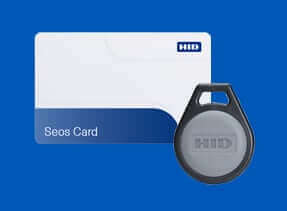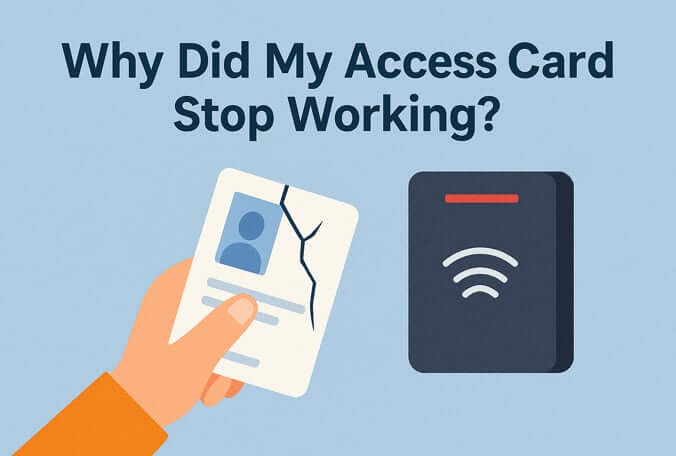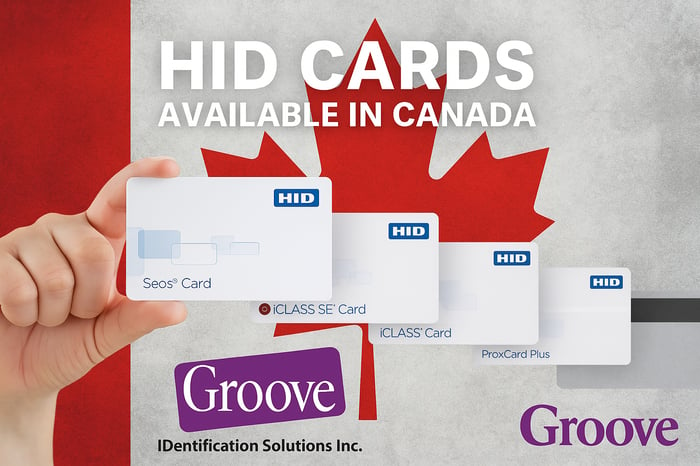Table of Contents
- What Is HID Seos?
- Why Organizations Are Moving from Proximity to HID Seos cards
- Core Security Features of Seos
- Business Benefits Beyond Security
- Planning Your Migration: From Proximity to Seos
- Combo Cards: Bridging Old and New
- Seos Form Factors: ISO Card, Clamshell, and Fob
- Important Handling Note: Do Not Slot-Punch ISO HID Seos cards
- Reader Strategy for Seos
- Issuance and Personalization Workflows
- Cost and ROI Considerations
- Policy and Governance Essentials
- Supporting Users Through Change
- Mobile IDs with Seos: Extend, Don’t Replace (Unless You Want To)
- Visual Security Enhancements
- A Practical Checklist for Your Seos Migration
- Frequently Asked Questions
- Conclusion and Next Steps
- FAQs
HID Seos Card Technology: A Complete Guide to Benefits, Security, Form Factors, and Migration from Proximity
HID Seos cards- If your organization is planning a move away from legacy 125 kHz proximity cards, HID Global’s Seos technology is the modern, crypto-driven platform designed for today’s physical access control and tomorrow’s digital identity needs. This in-depth guide explains what Seos is, why it is more secure than legacy options, how to migrate without disruption (including combo cards), the available form factors for HID Seos cards, and an important handling note: thin ISO Seos cards should not be slot-punched because you risk damaging the embedded antenna. We also include practical checklists and FAQs to help you brief stakeholders and accelerate decision-making.

What Is HID Seos?
Seos is HID Global’s high-assurance credential technology that applies modern cryptography to physical access control. Unlike legacy proximity cards that simply broadcast an ID number, Seos performs secure, encrypted exchanges with the reader, preventing easy eavesdropping, cloning, or replay attacks. Seos is also a versatile identity container: the same credential model can support door access, secure print, logical login, and more, and it extends cleanly into mobile IDs on iOS and Android.
In short, Seos brings the design assumptions of modern cybersecurity to your doors, readers, and badges.
Why Organizations Are Moving from Proximity to HID Seos cards
Legacy 125 kHz proximity was a breakthrough in its day—simple and inexpensive—but its simplicity is now its weakness. Common pain points:
Card cloning risk
Limited data capacity and no cryptographic protections
Fragmented ecosystems when you try to add new applications
Difficulty meeting modern compliance expectations
Seos resolves these with mutual authentication, encrypted messaging, diversified keys, and flexible data models—while providing a forward path to mobile credentials and multi-application deployments.
Core Security Features of Seos
Mutual Authentication
The card (or mobile ID) and the reader verify each other before any data is exchanged. This prevents “impostor reader” and “fake card” scenarios.Encrypted, Secure Messaging
All credential-reader communication is encrypted, mitigating eavesdropping and playback.Diversified Keys and Per-Credential Uniqueness
Each credential uses unique keys derived from master material, reducing systemic risk and limiting blast radius in the event of compromise.Standards-Aligned Crypto
Seos employs well-vetted algorithms rather than proprietary obscurity, aligning with best practices demanded by InfoSec teams.Data Integrity and Application Separation
Seos supports secure identity objects with strong integrity checking and compartmentalization, enabling different applications to coexist on a single credential without unintended interactions.Lifecycle and Revocation Controls
Seos is designed for modern issuance workflows, enabling better traceability, revocation, and reissuance processes across card and mobile ecosystems.
Business Benefits Beyond Security
Lower Total Risk and Fewer Incidents
Reducing cloneable credentials directly lowers incident probability and investigative overhead.Multi-Application Enablement
Use one Seos credential for doors, secure print, time & attendance, cafeteria, and workstation sign-on—without proliferating card types.Future-Readiness with Mobile IDs
Seos provides a direct path to HID Mobile Access. You can enable phones and wearables while keeping physical cards for users and scenarios that need them.Vendor Ecosystem and Interoperability
Seos is widely supported in enterprise-class controllers, readers, and software platforms, making it easier to standardize.Compliance Alignment
Whether you’re mapping to corporate InfoSec policies or regulated frameworks, the cryptographic foundations of Seos make it easier to justify your controls.
Planning Your Migration: From Proximity to Seos
Migrating doesn’t have to be disruptive or expensive. The right plan lets you phase in Seos while your legacy badges still work.
Step 1: Inventory Your Current Environment
• Card technologies in use (e.g., 125 kHz Prox), facility codes, bit formats
• Reader models and firmware levels
• PACS software version and database fields in use
• Integrations (e.g., print release, parking, cafeteria, SSO)
Step 2: Define Target State
• Seos as primary credential technology
• Reader strategy: multi-tech readers that can read both legacy and Seos during the transition
• Mobile ID roadmap: pilot now or later
• Card art, personalization, and issuance workflows
Step 3: Choose a Transition Strategy
Option A: Reader-First Upgrade
Replace or reconfigure readers to support Seos (and legacy Prox). Issue Seos or Seos/Prox combo cards to new users while existing users continue with legacy badges until re-carding.
Option B: Card-First with Combo Cards
Issue Seos/Prox combo cards that present Prox to legacy readers and Seos to upgraded ones. This accelerates population coverage without changing every reader up front.
Option C: Mixed + Mobile
Use combo cards for door access and introduce mobile IDs for specific user groups (contractors, frequent travelers, executive floors), reducing physical card issuance pressure.
Step 4: Governance and Data Hygiene
• Normalize cardholder records, deactivate duplicates, and define a single authoritative source for card status.
• Establish issuance, replacement, and revocation SLAs.
Step 5: Pilot, Then Phase Rollouts
• Start with a department or building. Validate throughput, photo workflows, print templates, and badge accessories.
• Communicate policy changes (e.g., no slot punching for ISO Seos cards; use badge holders or clamshells).
Combo Cards: Bridging Old and New
Combo cards (often called dual-technology cards) carry both a legacy Prox credential and Seos. They’re perfect for phased environments with mixed readers. Benefits include:
• Smooth cutover: New hires get a Seos-ready badge that still opens legacy doors.
• Faster coverage: You can upgrade high-risk doors first, then convert the rest without blocking users.
• Less retraining: Front-line operations see fewer exceptions because one badge works everywhere during the transition.
When you finalize the migration, you can disable the legacy Prox side at the controller or by policy.
Seos Form Factors: ISO Card, Clamshell, and Fob
Seos credentials are available in multiple physical forms so you can match durability, branding, and wearing preferences.
ISO (CR80) Card
• The standard thin card used for photo ID printing and visual identification.
• Ideal for organizations that require branded, full-color badges.
• Handling note: ISO Seos cards should not be slot-punched; slot punching can sever the embedded antenna coil or weaken laminate layers. Use a badge holder, a plastic strap clip through a holder, or order a clamshell or fob when you require a built-in slot.
Clamshell Card
• A thicker, rugged card body designed for durability and often molded with a vertical slot area.
• Great for industrial environments or where cards take abuse.
• Typically not printable with standard dye-sub printers; use an adhesive printable label or keep clamshells primarily functional with minimal visual design.
Key Fob
• Compact and durable, attaches to a keyring or lanyard.
• Ideal for users who don’t need a photo ID or who prefer not to wear a badge.
• Useful as a secondary factor for shared spaces (e.g., tool cribs, labs).
Wearables and Mobile
• Seos extends to HID Mobile Access for phones and some wearables, bringing tap-or-twist convenience, revocation speed, and reduced plastic use.
Important Handling Note: Do Not Slot-Punch ISO HID Seos cards
It bears repeating: do not slot-punch thin ISO HID Seos cards. The slot punch can damage the internal antenna or stress the card body, causing intermittent reads or outright failures. If you need a slot or punch:
• Choose Seos clamshell cards with a molded slot area
• Use a protective badge holder with a clip or lanyard
• Consider fobs for ruggedized attachment
• For visual ID on clamshells, apply a printable adhesive PVC Card instead of trying to print directly
This policy protects card reliability and avoids preventable replacement costs.
Reader Strategy for Seos
Modern readers support Seos along with other technologies to smooth migration. Consider:
• Multi-technology readers (Seos + legacy Prox during transition) such as HID Signo Series Readers
• Firmware currency for cryptographic updates
• Reader configuration: enable only the protocols you need; disable weak legacy modes once you’ve completed migration
• Physical placement and protection: weather-resistant housings outdoors, tamper detection for high-risk doors
• Performance tuning: read range and time-out settings, particularly in mixed-technology phases
Issuance and Personalization Workflows
Moving to HID Seos cards is an opportunity to modernize badge issuance:
• Photo capture and approval workflows with audit trails
• Printer fleet standards (e.g., retransfer printers for edge-to-edge on composite cards)
• Lamination overlays or embedded security print for visual anti-counterfeiting
• Central vs. distributed issuance models and SLAs for replacement times
• Automated provisioning via HRIS/IDMS to maintain accurate access status
Cost and ROI Considerations
While Seos readers and HID Seos cards cost more than legacy Prox, most organizations find the ROI compelling when factoring in:
• Reduced risk of cloned badge incidents
• Consolidation of multiple card types into one platform
• Enabling secure print or logical access without separate tokens
• Lower reissuance and travel time when mobile IDs are added for specific groups
• Longer lifecycle of a crypto-based platform that supports updates
Policy and Governance Essentials
A secure technology still needs sound policy:
•HID Seos cards ownership and return policies for offboarding
• Revocation timelines and emergency disable procedures
• Lost/stolen reporting workflows
• Visitor and contractor credential policies (temporary HID Seos cards or mobile passes)
• Periodic key and configuration audits on readers and controllers
• Clear accessories policy (e.g., no slot punching ISO Seos cards; approved holders and lanyards)
Supporting Users Through Change
User experience is where migrations succeed:
• Communicate early and often: what changes, why it matters, and how to get help
• Offer a quick reference guide with visuals (how to wear, tap, or present the card/phone)
• Train reception and security desks on exceptions and temporary issuance
• Provide alternative form factors for accessibility needs (fob vs card)
• Stagger changes by building or department to simplify support
Mobile IDs with Seos: Extend, Don’t Replace (Unless You Want To)
Mobile IDs complement physical badges:
• Fast issuance and revocation for contractors and visitors
• Reduced plastic and shipping logistics
• Phone-native UX: notifications, tap-to-enter, and optional PIN/biometrics
• Policy flexibility: choose mobile-only for some users, cards for others
Visual Security Enhancements
Seos secures the RF side; don’t forget visual deterrents:
• Holographic or UV elements in card artwork
• Color-coded role badges (e.g., contractor vs employee)
• Printed expiration for temps and visitors
• Lanyards and badge holders with breakaway safety features
A Practical Checklist for Your Seos Migration
Document current card types, readers, and software versions
Choose multi-tech readers and a combo-card plan if needed
Define issuance workflows and SLAs
Standardize on approved accessories (no slot punching ISO Seos)
Pilot in one building or department, then expand
Train front-line staff and publish a quick reference guide
Establish governance for revocation, lost/stolen, and audits
Decide where mobile IDs add immediate value
Sunset legacy Prox modes as you complete each area
Review and tune after 90 days
Frequently Asked Questions
Q: Is Seos backward-compatible with my existing proximity readers?
A: Not directly. Plan on multi-technology readers or use Seos/Prox combo cards during migration.
Q: Can I print photo ID on Seos cards?
A: Yes, on ISO (CR80) HID Seos cards using standard photo ID printers. For heavy-duty environments, clamshell cards are more rugged but are generally not direct-printable; use a printable adhesive label if visual ID is required on clamshells.
Q: Can Seos cards be slot-punched?
A: Do not slot-punch thin ISO Seos cards; you risk damaging the antenna. Use a badge holder, choose clamshell cards with molded slots, or select fobs.
Q: Do HID Seos cards and Seos technology support mobile phones?
A: Yes. Seos is the foundation for HID Mobile Access, enabling iOS and Android devices to act as secure credentials where your policy allows.
Q: What is the best first step to migrate?
A: Upgrade to multi-tech readers on a pilot set of doors, issue Seos/Prox combo cards to that population, validate workflows, then phase the rest of the site.
Conclusion and Next Steps
Seos is more than a secure replacement for 125 kHz proximity—it’s a platform for unified identity across doors, devices, and services. With a reader strategy that supports both legacy and Seos, combo cards to bridge the gap, and form factors tailored to your users (ISO, clamshell, fob, and mobile), you can raise security, simplify operations, and create room for future applications. Just remember the practical handling rule: never slot-punch thin ISO HID Seos cards; choose holders, clamshells, or fobs instead.
Ready to plan a phased migration, evaluate readers, or standardize on issuance workflows? Our team can help you assess your environment, pilot Seos quickly, and roll out with minimal disruption.
Phone: 1-888-940-3645
Website: groovebadges.com
Email: info@groovebadges.com
FAQs
Is Seos backward-compatible with my existing proximity readers?
Not directly. Plan on multi-technology readers or use Seos/Prox combo cards during migration.
Can I print photo ID on Seos cards?
Yes, on ISO (CR80) Seos cards using standard photo ID printers. For heavy-duty environments, clamshell cards are more rugged but are generally not direct-printable; use a printable adhesive label if visual ID is required on clamshells.
Can Seos cards be slot-punched?
Do not slot-punch thin ISO Seos cards; you risk damaging the antenna. Use a badge holder, choose clamshell cards with molded slots, or select fobs.
Do Seos credentials support mobile phones?
Yes. Seos is the foundation for HID Mobile Access, enabling iOS and Android devices to act as secure credentials where your policy allows.
What is the best first step to migrate?
Upgrade to multi-tech readers on a pilot set of doors, issue Seos/Prox combo cards to that population, validate workflows, then phase the rest of the site.


